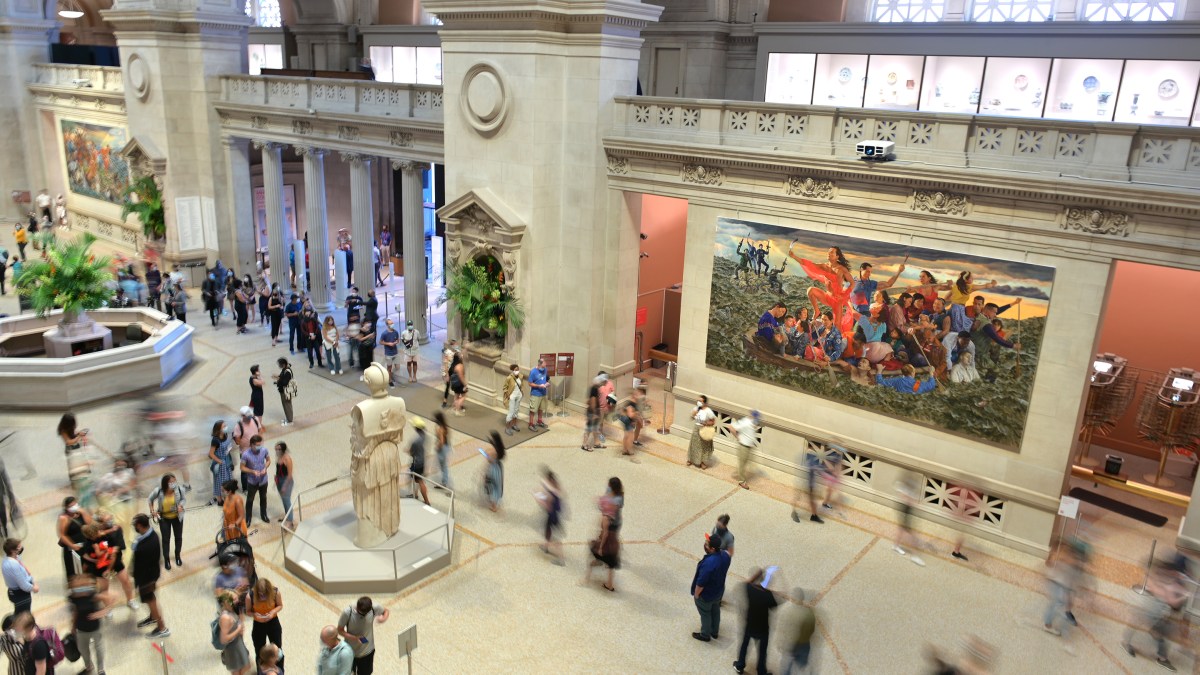Art museums are selling off parts of their collections to survive

The pandemic has been nothing short of a disaster for many cultural institutions. Take art museums, for example: Many are facing severe budget shortfalls. New York’s Metropolitan Museum of Art may face a deficit of over $100 million this year. Some smaller museums may have to close permanently.
Next month, the Brooklyn Museum will sell 12 pieces from its permanent collection. Museums regularly sell art to acquire other art, but selling art for financial reasons? That’s long been a huge no-no, said David Yermack, a professor of finance at New York University.
“The rationale for that was really to just keep the curators from selling off the collection to overpay themselves to personally consume the value of the collection,” he said.
But then the pandemic happened.
“People have stopped coming and stopped paying admission,” said Michael O’Hare, professor emeritus of public policy at University of California, Berkeley.
That means museums will be facing budget shortfalls, said Brent Benjamin, president of the Association of Art Museum Directors.
“Anywhere from tens to hundreds of millions of dollars. So really a significant financial impact,” he said.
Art museums are in a unique position to ride out the pandemic crisis, unlike zoos or natural history museums, said Wayne State University art historian Jeffrey Abt.
“They have assets that can be translated into cash fairly quickly and fairly efficiently,” he said.
And most major art museums have a surplus of art, said Yermack of NYU. He estimated five paintings are in storage for every one on display.
“If they sold these off, not only could they improve their own financial positions, but you could really find other places for the art to be displayed,” Yermack said. “Smaller museums could build their own collections.”
And if it came to it, those smaller museums, too, could sell that art.
Stories You Might Like
What’s going on with extra COVID-19 unemployment benefits?
It’s been weeks since President Donald Trump signed an executive memorandum that was supposed to get the federal government back into the business of topping up unemployment benefits, to $400 a week. Few states, however, are currently paying even part of the benefit that the president promised. And, it looks like, in most states, the maximum additional benefit unemployment recipients will be able to get is $300.
What’s the latest on evictions?
For millions of Americans, things are looking grim. Unemployment is high, and pandemic eviction moratoriums have expired in states across the country. And as many people already know, eviction is something that can haunt a person’s life for years. For instance, getting evicted can make it hard to rent again. And that can lead to spiraling poverty.
Which retailers are requiring that people wear masks when shopping? And how are they enforcing those rules?
Walmart, Target, Lowe’s, CVS, Home Depot, Costco — they all have policies that say shoppers are required to wear a mask. When an employee confronts a customer who refuses, the interaction can spin out of control, so many of these retailers are telling their workers to not enforce these mandates. But, just having them will actually get more people to wear masks.
You can find answers to more questions on unemployment benefits and COVID-19 here.
As a nonprofit news organization, our future depends on listeners like you who believe in the power of public service journalism.
Your investment in Marketplace helps us remain paywall-free and ensures everyone has access to trustworthy, unbiased news and information, regardless of their ability to pay.
Donate today — in any amount — to become a Marketplace Investor. Now more than ever, your commitment makes a difference.
tinyurlis.gdv.gdv.htclck.ruulvis.netshrtco.detny.im
